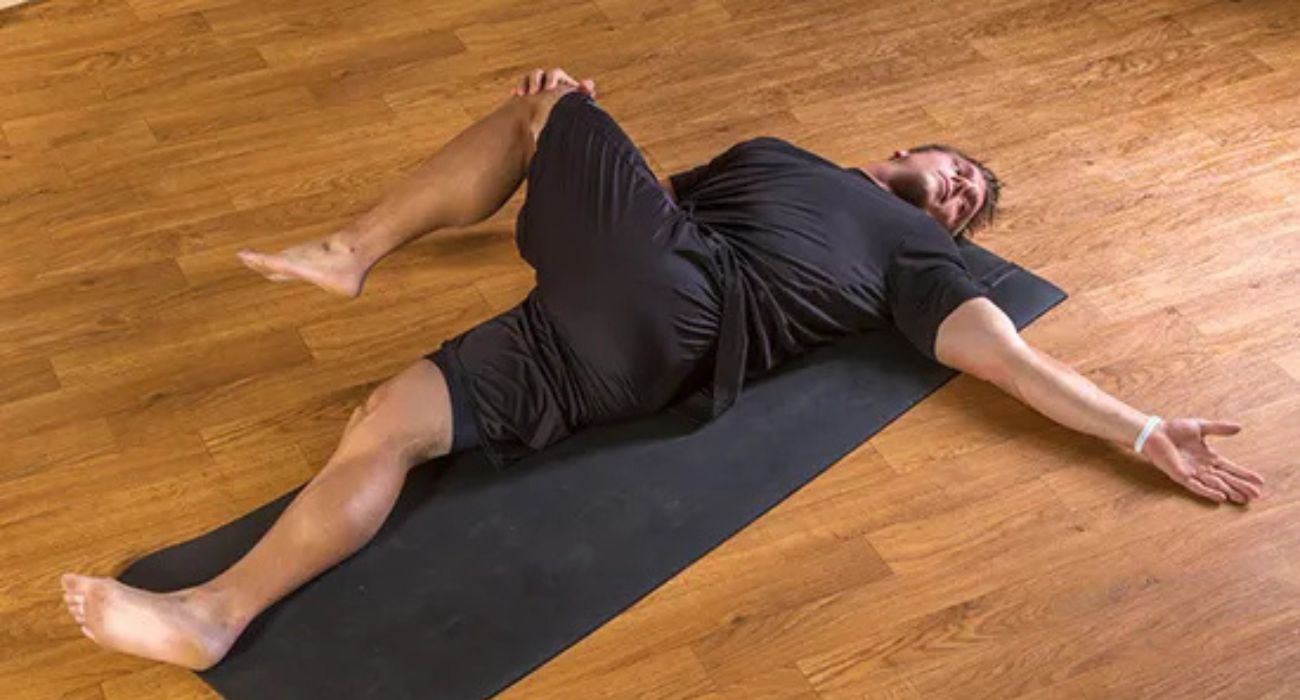If your sleep is shallow, your mornings start groggy. So if you are not sleeping well at night and wake up tired after hours of sleep, it’s time to rethink your routine. Science and experts have agreed that stretching before bed can significantly improve sleep quality by calming the nervous system, releasing built-up muscle tension, and signalling to your body that it’s time to rest. This 10-minute nightly stretching routine can help prepare your body and brain for deeper, more restorative sleep.
Standing Forward Fold (1 minute)
Why it works: Forward folds help quiet the mind by stimulating our rest-and-digest mode. They also stretch the hamstrings and lower back, where most of us carry tension from long hours of sitting or standing.
How to: Stand with feet hip-width apart. Hinge at the hips and fold forward, letting your arms dangle. Slightly bend your knees if needed. Breathe deeply and relax your neck.
Cat-Cow Stretch (1 minute)
Why it works: This gentle flow warms up the spine and promotes circulation in the back muscles. It also syncs movement with breath, which slows your heart rate and eases mental tension.
How to: Start on all fours. Inhale as you arch your back (cow), lifting your chest and tailbone. Exhale as you round your spine (cat), tucking your chin and pelvis. Repeat slowly for one minute.
Seated Forward Fold (1 minute)
Why it works: This grounding stretch triggers a relaxation response in the nervous system and helps counteract the effects of tight hips and hamstrings—especially if you’ve been on your feet all day.
How to: Sit with legs extended. Inhale to lengthen the spine, exhale and fold forward from the hips. Let your hands rest on your shins, ankles, or feet.
Reclining Spinal Twist (1 minute each side)
Why it works: Spinal twists release tension in the lower back and aid digestion—especially useful if you’ve eaten late. Twisting also promotes a gentle “wringing out” of stress and emotional tension.
How to: Lie on your back. Bring your right knee to your chest, then guide it across your body to the left. Extend your right arm and gaze right. Breathe deeply. Switch sides after 1 minute.
Legs Up the Wall (2 minutes)
Why it works: This restorative pose is the king of pre-sleep stretches. It improves blood circulation, reduces swelling in the legs, and calms the nervous system. It also relieves lower back tension without requiring any effort.
How to: Lie on your back and place your legs up against a wall, keeping your hips as close to the wall as possible. Let your arms rest by your sides, palms up.
Supine Butterfly (2 minutes)
Why it works: Gentle hip openers release stored tension and can reduce restlessness. Supine poses lower the heart rate, making it easier to fall asleep faster and stay asleep longer.
How to: Lie on your back. Bring your feet together and let your knees fall open on the floor. Place one hand on your belly and one on your chest, and breathe deeply.
Stretching at night sends powerful cues to your body–it shifts your nervous system from alert mode to calmness. Regularly practicing this routine may lead to falling asleep faster, deeper and sound sleep, reduced muscle soreness and low stress and anxiety levels.
Also, throughout the routine, breathe slowly and deeply—preferably in through the nose and out through the mouth. Try a 4-16-8 rhythm: inhale for 4 seconds, hold for 16, exhale for 8. It works like sleep medicine.






